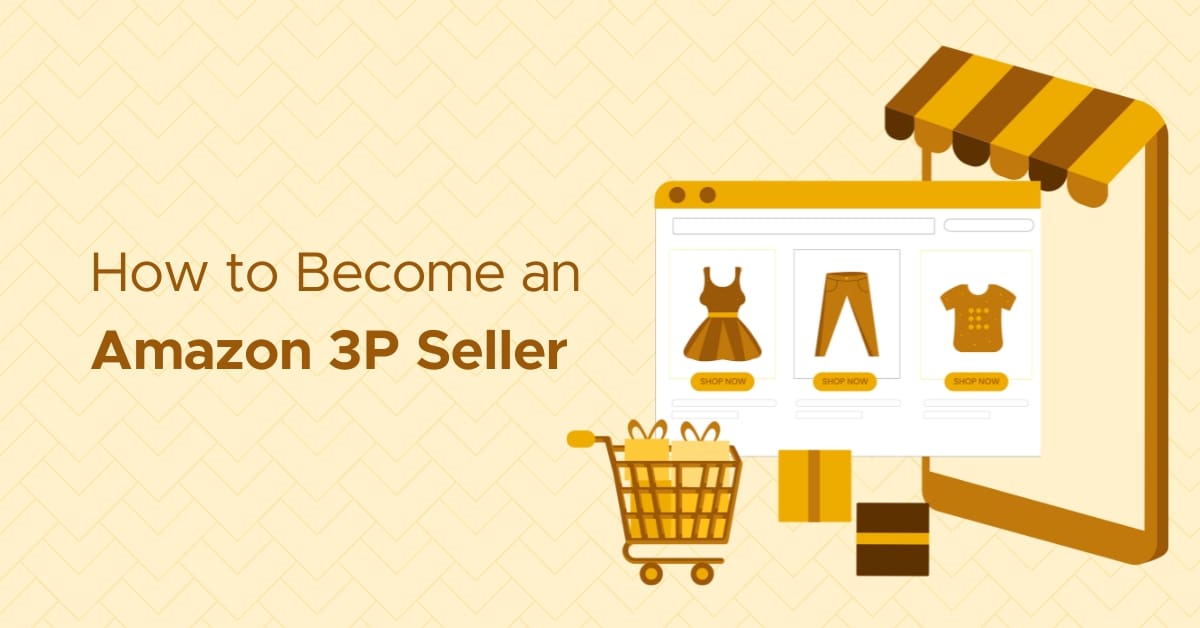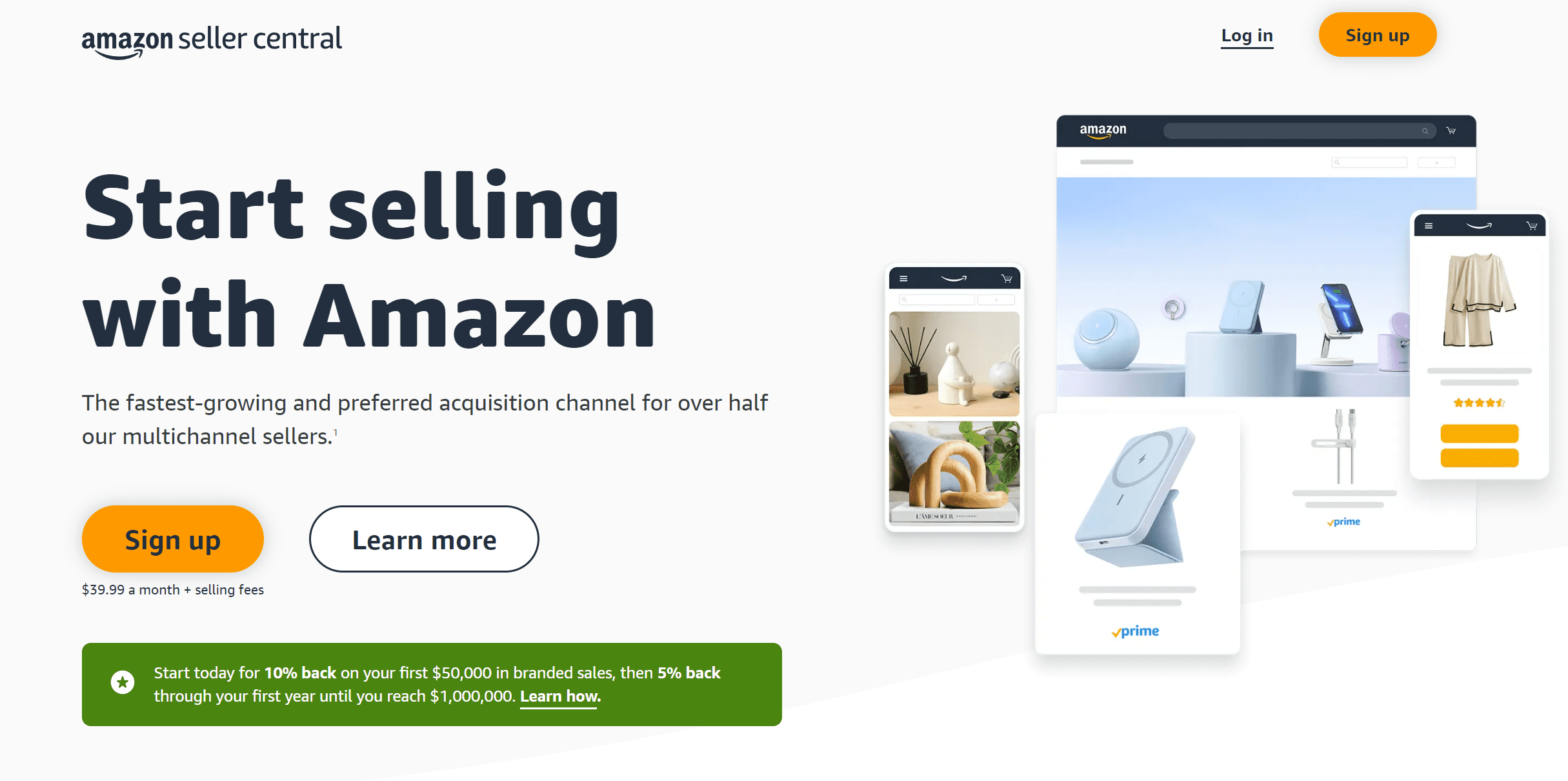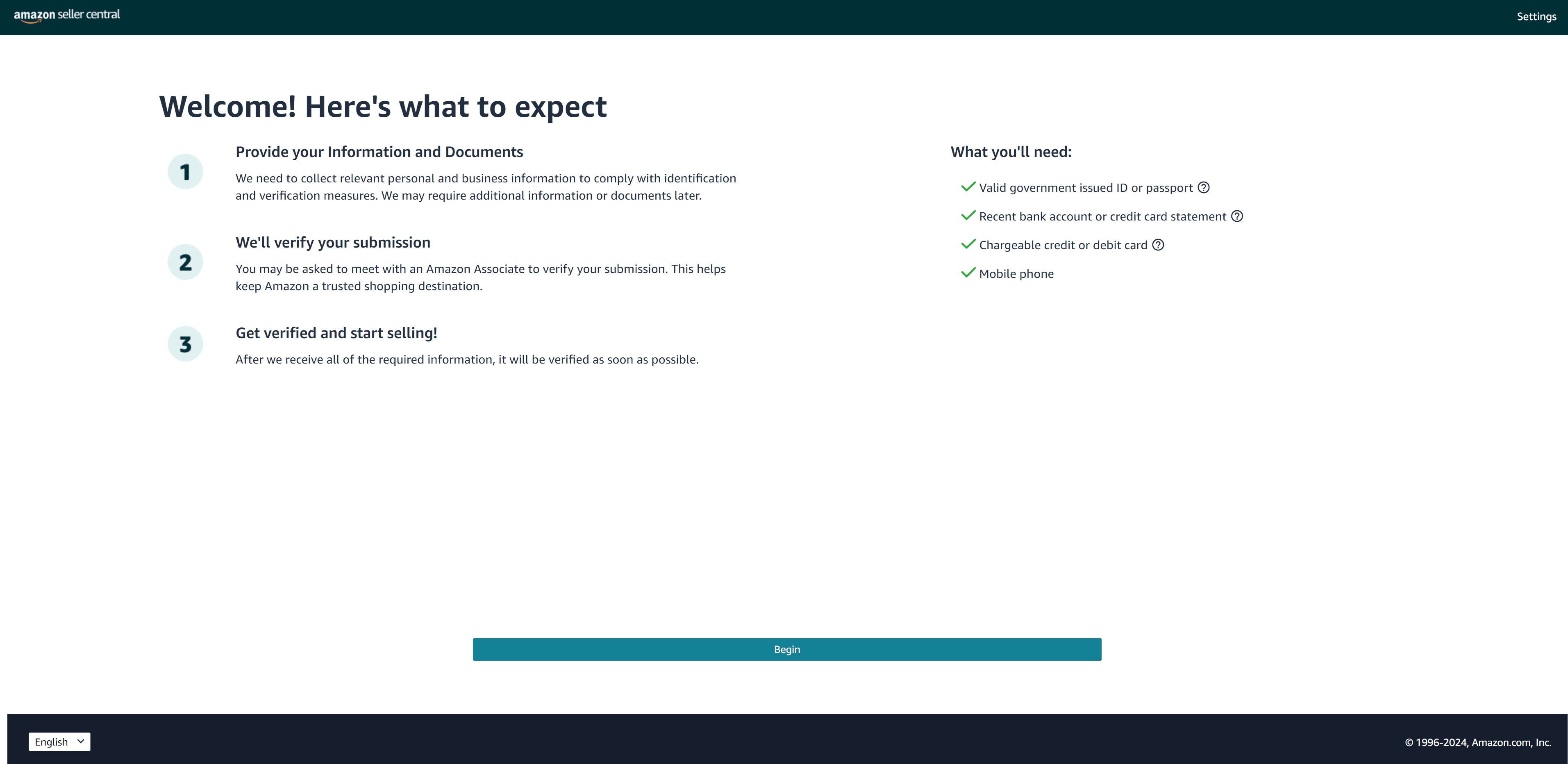
How to Become an Amazon 3P Seller

If you’re stepping into the world of eCommerce, Amazon is the place to be. In the U.S., they own 37.6% of the eCommerce market share, with Walmart in a distant second place at 6.4%.
For sellers who want to access a large pool of customers, leverage consumer trust in the marketplace to earn sales, and take advantage of the tools offered to sellers on the platform, listing on Amazon is the way to go.
While there are other options for selling (and you’ll have to choose between selling 1P or 3P), becoming an Amazon 3p seller (third-party) seller is the right avenue for many. Often, that means setting up your own brand, listing products yourself, and operating a business using Amazon as a marketplace.
In Q1 of 2024, 61% of sales on the Amazon platform were from 3P sellers — that’s a big opportunity. To tap into that potential, we’ll explain what Amazon 3P selling is and how to embrace the model in your own business.
What is an Amazon 3P seller?
An Amazon 3P seller is an external business that operates on Amazon. 3P differs from 1P in that brands in the latter category sell products directly to Amazon. The marketplace buys their merchandise in bulk, and they receive payment via a single invoice for everything Amazon sells. Amazon also fulfills those orders and handles everything except ensuring the initial bulk order reaches their warehouses.
In contrast, a 3P seller opens an Amazon seller account, lists products directly, and then offers everything behind those sales. That means you manage branding, customer service, merchandising, product descriptions, inventory management, warehousing, fulfillment — everything.
Planning for Amazon 3P success
While most Amazon 3p sellers prefer to start small on Amazon and work out the kinks as they go, the marketplace is geared towards those who want to scale up rapidly. For instance, your performance in the first 39 weeks of having a professional seller account will determine your restock limits in Amazon warehouses for FBA.
Having infrastructure in place to support sales along with an aggressive growth strategy will allow you to take advantage of Amazon’s expansion offerings so you can more easily scale and maintain it. In that regard, Amazon 3P sellers need to keep in mind important aspects like:
- Fulfillment: You’ll have to choose either FBA (Fulfilled by Amazon) or FBM (Fulfilled by Merchant, that is, yourself). For most sellers with small, fast-moving products, FBA is the way to go. However, you’ll still want to invest in inventory management and FBA prep to ensure you save costs and don’t run into problems with Amazon.
- Product prep: Products must be packaged, labeled, and shipped in accordance with Amazon’s policies, even if you use FBA and programs like Ships in Product Packaging. Given its specificity and hands-on nature, it’s often best to hand off product prep to a 3PL that can manage outbound shipments and ensure boxes meet Amazon’s standards. Failure to comply will result in higher fees and return costs.
- Customer service: With FBA, Amazon handles customer service and returns logistics for you. Otherwise, you’ll need a system in place to manage customer service. In that case, you’ll have 24 hours to respond to shopper inquiries and 48 hours for a return request. That means you’ll need dedicated people and software to ensure you stay on top of incoming tickets (especially if you scale to multiple platforms).
- Inventory management solutions: Even if you only sell on Amazon, you need an inventory management solution in place that understands throughput; tracks inventory in your warehouse, Amazon warehouses, and as it ships; and keeps up with stock. That normally requires inventory management software, setting up a SKU (stock keeping unit) system, and ensuring you understand lead times and replenishment times for each SKU at every warehouse/location where you hold stock.
- Marketing: Early advertising and marketing efforts can be risky because you won’t know the total expenses. However, estimating amounts based on fees, product costs, fulfillment, etc., and then adding a buffer or safety margin will give you a good idea of what you can spend on advertising and marketing. For example, if you know the expected profit margin of a product is $4 per item, you’ll have an idea of your maximum advertising spend for Amazon Sponsored Products.
- Merchandising: Merchandising should be done and out of the way before you set up your Amazon account. That means creating an Excel file of product copy, photos, and details that meet Amazon standards.
Setting up on Amazon

Creating your Amazon 3P seller account is relatively simple, but approval will take some time. You’ll also want to ensure you’ve completed all of your preparatory steps, like writing copy for descriptions and conducting product photography. Below, we’ve outlined the steps to launch successfully on Amazon as a 3P seller:
Choose your Amazon account
If you intend to sell more than 40 items a month, you’ll need an Amazon Pro account. You’ll also need to understand Amazon’s seller policies and code of conduct, what you can and can’t list, and the like. Performing this basic research up front will save you a lot of hassle as you begin to sell products.
Set up your Amazon 3P seller account
Click Sign Up on Sellercentral.amazon.com and then register either a new account or sign in with an existing account number.

You’ll need the following details to set up the account:
- Bank account number/routing number
- Credit card
- Government-issued ID
- Tax information
- Phone number
Create your seller profile
Add logos, public descriptions, business information, and fill as much of your profile as possible. You need to set this up before you can start selling. It also requires checking tax information and settings, notifications, login settings, and other back-end elements.
Verification can take 24 hours to 10 days, and you may have to answer additional questions.
List your products
Either craft product listings individually or batch upload them via a prepared excel file. In most cases, you should have all the content settled before you start, including elements like images, product detail pages, bullet points, variations, and offers. You should also have keywords decided, which entails research. If you’re listing products that are already on Amazon, you’ll have to use those listings rather than create unique ones. If you have a new product though, you’ll have to provide the UPC/EAN, SKU, and other information, then wait for Amazon to assign it an ASIN.
Set up your fulfillment options
This will be chosen on a per-product basis. Here, it’s important to keep in mind you can do both FBA and FBM, but you should have separate SKUs for each for your own internal management.
Enroll in Brand Registry
This is especially important if you’re selling your own branded products. The program offers a lot of perks, including increased access to reviews and better merchandising tools.
Once your products are approved, you can smoothly transition to making sales. If you get a jumpstart on marketing, you can increase that sales velocity, push early sales to gather reviews, and keep the momentum going.
Tips for selling 3P on Amazon
Getting started as an Amazon 3p seller is relatively simple. But there’s a lot going on in the background, and getting those details right will help you succeed over the long term. Here are some quick tips to start you off on the right foot:
- Leverage FBA for small and fast-moving inventory. It’ll save you on costs, while removing much of the burden of building infrastructure while you set up your business. You can always scale away from FBA later. In addition, with no restock limits for early accounts, you’ll have every opportunity to expand as much as you want.
- FBA creates a tax nexus for every state where your goods are stored. You can save on program replenishment fees by shipping boxes to more locations, but you could end up with a tax nexus in up to 16 states. So, stay on top of where you store your inventory (although Amazon will collect sales tax for you where necessary).
- Offload other fulfillment, especially for larger items, to a 3PL. You can also use it as a backup for fulfilling FBA orders if your inventory runs out. Plus, a 3Pl like MyFBAPrep can step in to prep and ship inventory to Amazon’s warehouses.
- Invest in inventory management software with SKU management, location overviews, and inventory forecasting. Establishing a robust system is easier at the start, and then you’ll only have to scale it as you go.
- Stay on top of Amazon fees and check how you can reduce them, or else they’ll eat into your margins.
- Take steps to increase growth velocity early, such as using sponsored products or enrolling in Brand Registry and collecting reviews, to improve your sales over the long term. Amazon offers a wealth of tools to help start-ups launch and capitalize on them for a major payoff.
Wrapping up — Take the plunge and start selling 3PL on Amazon
Becoming an Amazon 3P seller is a relatively simple process of opening an account and listing your products. However, a successful venture requires you to nail the elements discussed in this article. You’ll need to invest in reliable infrastructure from the start, including inventory management, fulfillment capacity, and customer service, to ensure you have what you need to begin making sales at whatever volume you want right away. Iron out the details to promote a thriving business via selling 3P on Amazon.

